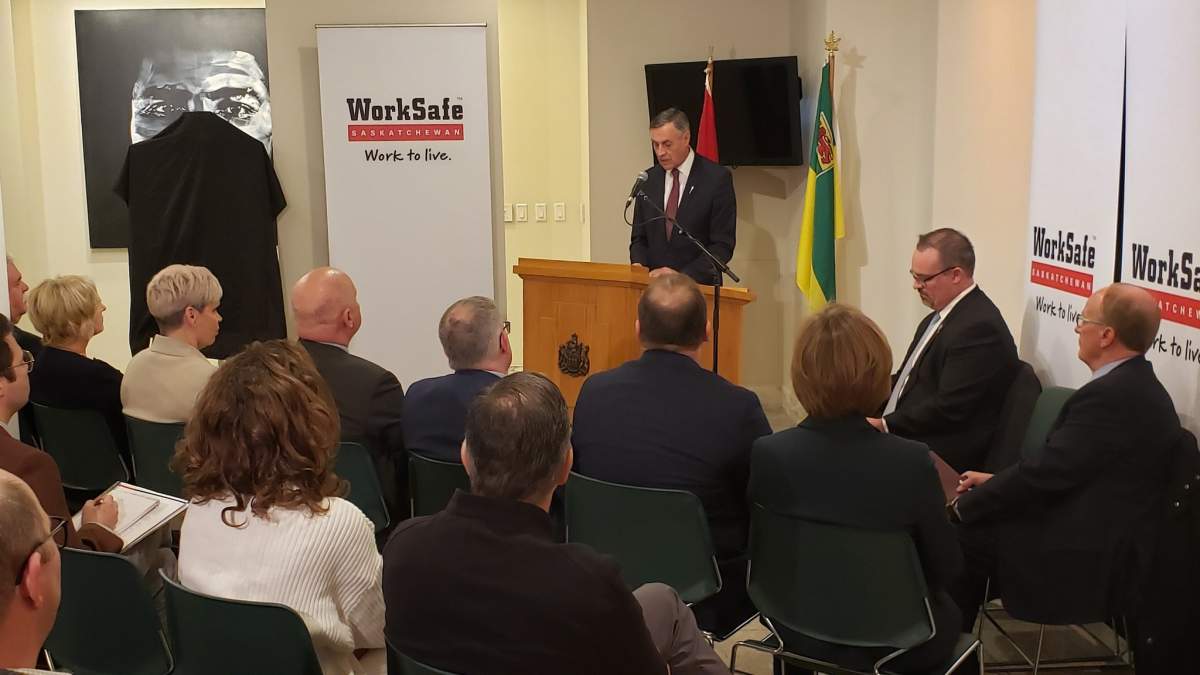Saskatchewan has one of the highest rates of workplace fatalities and injuries in Canada. To reduce these rates, the Saskatchewan government unveiled a new, three-year strategy with the Workers’ Compensation Board (WCB).

The strategy is focusing on four main areas for workplace fatalities: asbestos exposure, work-related vehicle crashes, falls and firefighter cancer exposure.
Labour and Workplace Safety Minister Don Morgan said the strategy will give officials the ability to target employers with higher than usual fatality/injury risks, create awareness campaigns, and standardize ways to prevent injury in similar industries like asbestos removal.
“Occupational health officers will know which employers and which industries are at greatest risk and they will focus their intention on them by doing more unannounced visits and working with them to try and develop a plan within each workplace, so it’s not just a matter of going in and saying you’re doing this wrong,” Morgan said.
“It’s a matter of developing a plan and a strategy within that workplace so that they know what they need to know to reduce injuries.”

Get breaking National news
Saskatchewan currently has around 50 occupational health and safety officers, according to Morgan.
The WCB said there are about 2,400 work-related injuries annually in Saskatchewan.
The WCB reports 354 work-related deaths from 2010-18. In this timeframe, asbestos exposure led to 87 deaths, 56 are due to vehicle crashes, 42 from heart attacks, 28 firefighter cancer deaths, 23 fatal falls and 11 people hit by vehicles. The remaining 107 deaths are not related to these main groups.
Morgan added that last year saw a spike in deaths due to six work-related deaths in the Humboldt Broncos bus crash and a “spike” in asbestos-related deaths.
Regina’s fire chief Layne Jackson said he is looking forward to learning from an upcoming safety audit of the province’s fire halls. The goal is to assess what safety equipment is being used and what can be done to decrease cancer risks.
Both Morgan and Jackson acknowledged fire-related cancer will be a difficult issue to address, due to the job’s regular exposure to burning building materials and other hazardous substances.
Jackson said cancer is a common occurrence in fire halls.
“We have a strong family culture in the fire service and when one of our members develops cancer, whether they be current or they be retired, it does have an impact on all of us,” Jackson said.
Saskatchewan recently expanded the types of cancers covered for firefighters under the WCB.
The Saskatchewan Federation of Labour (SFL) is happy to see the introduction of this strategy, following a call for a document like this about a year ago.
“While it took longer than we had hoped, the federation of labour is happy to see the release of this new strategy,” said SFL president Lori Johb.
“Working people were consulted throughout the process of developing the new strategy, and I truly believe the professionals at the Saskatchewan WCB really do want to address the crisis we are seeing in workplace deaths and injuries in this province.”








Comments